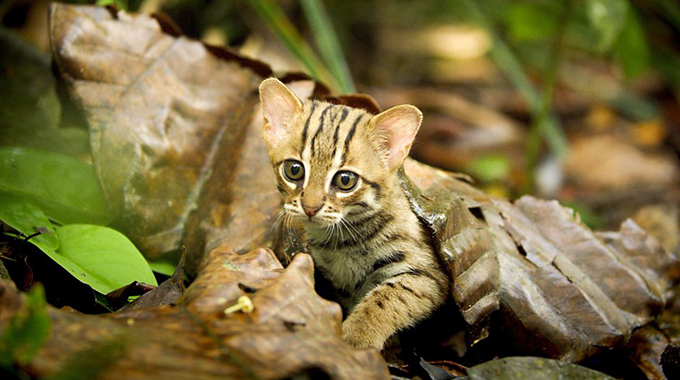
Nitya Mohanty Correspondent
Humans keep all sorts of animals as pets and new species are constantly being brought into the trade — some reared in captivity, but many sourced from the wild.
As a result, the global pet trade often puts wild populations at risk of over-exploitation. The Global Amphibian Assessment pegs 47 amphibian species to be predominantly threatened by unsustainable harvesting for the international pet trade.
And the risks don’t end there. For various reasons, people release pets into the wild, resulting in biological invasions. People might do this because keeping the animal isn’t the experience they expected, or because they can’t afford it any longer.
The problem is that, often, it may introduce a species to regions beyond their natural range. These invasive populations can harm native species and lead to the spread of diseases to new areas. For example, the pet trade is linked to the spread of an infectious fungal disease of salamanders in Europe, leading to large scale salamander mortality.
These threats are especially true for amphibians (frogs, newts and caecilians).
Amphibians are undergoing severe population declines all over the world due to habitat destruction, climate change, disease spread, and invasive species. Losing amphibians, pest-controllers par excellence, not only imperils agricultural security but can lead to imbalances in ecosystem processes.
Internet-based commerce is making it easier for the pet trade to include growing numbers and new species of amphibians. The trade is now the major pathway through which invasions of amphibians take place.
At least 104 amphibian species are invasive around the world, and more species are likely to be introduced in the future.
It is crucial to understand which species may be affected by the trade and which species may spur invasive populations following release.
In our new study, we aimed to assess the amphibian pet trade. We identified which species are being traded and why, and predicted which species are likely to be targeted in future. We uncovered nearly 450 species of amphibians in the pet trade, moved around the world in large numbers.
The US alone imported 3,6 million pet amphibians in the past five years. The magnitude of this trade indicates that more species are likely to be released and become invasive in non-native regions and facilitate disease spread.
Amphibian enthusiasts must carefully evaluate whether the species meets their expectations, and understand the cost of ownership, before purchasing.
Which species are traded?
We searched the scientific literature and import databases for traded amphibians around the globe. Then we looked at how traded and non-traded species differ from each other. To do this, we used a set of amphibian traits from the database AmphiBIO, which contains information on traits such as body size and reproductive capacity.
We also looked at whether the species were endangered or not, according to the International Union for Conservation of Nature. We examined whether these traits could explain the size of the trade in each species.
Our effort resulted in a long list of 443 traded species. We found a strong bias for certain types of amphibians; six amphibian families contributed disproportionately high numbers of traded species.
The colourful poison dart frog family is, unsurprisingly, a star attraction in the trade. More surprising as popular pets are the families of tongue-less frogs and reed frogs.
Next, we found that the traded species tend to be bigger. It is likely that extremely small body sizes are avoided because it’s harder for the owner to see or handle the pet often. Traded species also had larger range sizes, probably due to the ease of collecting them from the wild.
A final characteristic of traded species was a “larval” breeding type (indirect development), which produces offspring that are cheaper to raise than direct developing species.
These results help explain which species end up in the trade. It’s not just about what pet enthusiasts prefer; it’s also about how easy a species is to collect and to rear in captivity.
Body size, range size and breeding type explained, for the most part, why species are traded. We then used these traits to predict a list of species that could be future pets. Interestingly, species-traits could not explain the size of trade.
Blind spots
Although our investigation provides a good view of the trade, it has some blind spots. Trade in Asia remains understudied and is probably not well reflected in our compiled pet list.
We also couldn’t incorporate all the potential factors that may predict popular pets, such as colour and calls, because these traits haven’t been scored for the majority of around 7 000 amphibians we are dealing with in the analysis.
But more work is being done by our research lab to understand which traits attract owners of amphibians, which species are likely to be released, and how responsible pet ownership can be promoted.
Pet ownership comes with responsibilities, not just for the well-being of the pets, but for the unwanted effects their trade could have. We hope the information we have gathered will make pet owners and traders more aware of these aspects. With great pets come great responsibilities. — Conversation Africa
Nitya Mohanty, Post-doctoral fellow Centre for Invasion Biology (CIB) Department of Botany & Zoology, Stellenbosch University
